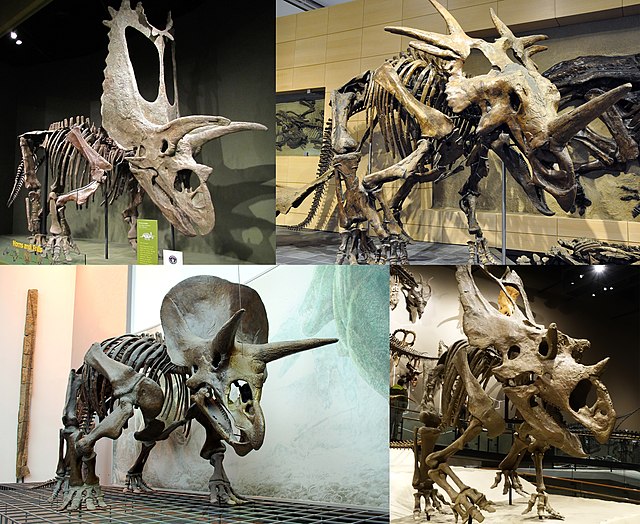Chasmosaurinae is a subfamily of ceratopsid dinosaurs. They were one of the most successful groups of herbivores of their time. Chasmosaurines appeared in the early Campanian, and became extinct, along with all other non-avian dinosaurs, during the Cretaceous–Paleogene extinction event. Broadly, the most distinguishing features of chasmosaurines are prominent brow horns and long frills lacking long spines; centrosaurines generally had short brow horns and relatively shorter frills, and often had long spines projecting from their frills.
Chasmosaurinae
Ceratopsidae is a family of ceratopsian dinosaurs including Triceratops, Centrosaurus, and Styracosaurus. All known species were quadrupedal herbivores from the Upper Cretaceous. All but one species are known from western North America, which formed the island continent of Laramidia during most of the Late Cretaceous. Ceratopsids are characterized by beaks, rows of shearing teeth in the back of the jaw, elaborate nasal horns, and a thin parietal-squamosal shelf that extends back and up into a frill. The group is divided into two subfamilies—Chasmosaurinae and Centrosaurinae. The chasmosaurines are generally characterized by long, triangular frills and well-developed brow horns. The centrosaurines had well-developed nasal horns or nasal bosses, shorter and more rectangular frills, and elaborate spines on the back of the frill.
Ceratopsidae
Ceratopsid teeth have a distinctive leaf shape with a primary ridge running down the middle.
Ceratopsid skulls at the Natural History Museum of Utah




